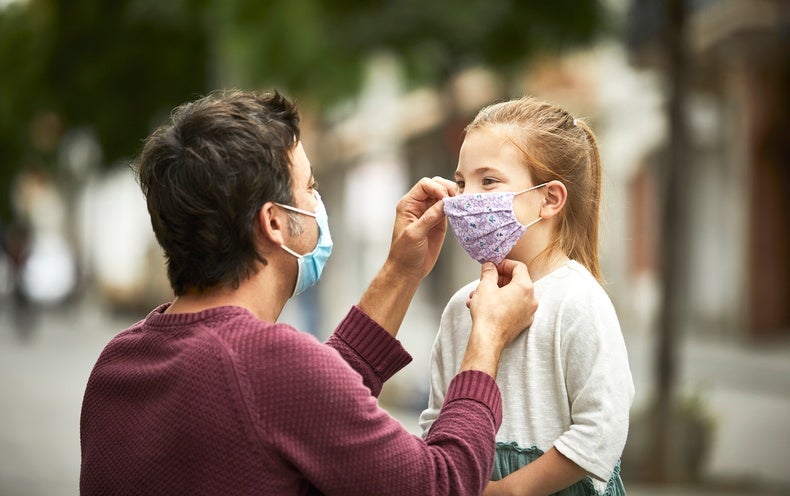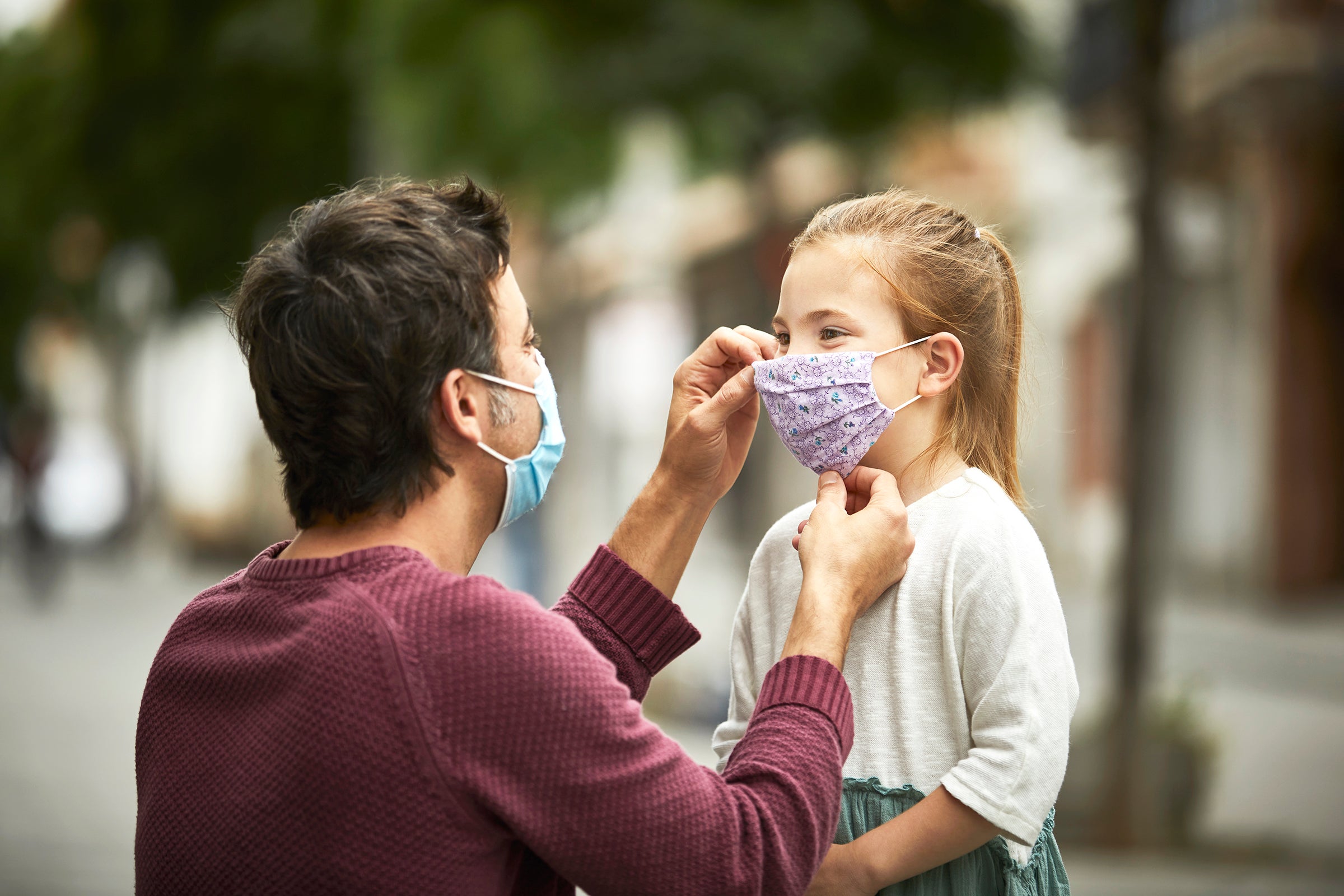| Message:
Anthony Fauci is not celebrating Thanksgiving with his three adult daughters this year. The now famous director of the National Institute of Allergy and Infectious Diseases said in an American University Webinar that as much as he would love to spend the holiday with his kids, they had told him, "We want you and Mommy to have a nice, quiet dinner." Fauci may be "a 'young,' vigorous guy," they said, but he is also 79 years old—and that puts him in a vulnerable category for COVID-19. So his children, who are spread across the country, have decided to send their love via Zoom.
With COVID-19 cases hitting an all-time high, a decision not to gather in person may be the most loving one a family can make this holiday season. This is especially the case if its members include individuals in higher-risk categories, such as older adults and people with diabetes or cancer, to name just a few. But not every type of holiday celebration carries the same risk, and the dangers of people getting together need to be weighed against the benefits of social interaction, says infectious disease epidemiologist Julia Marcus of Harvard Medical School. "For some people, there are going to be risks very [much] worth taking," she says.
There is no such thing as a totally COVID-safe family gathering. But here are some ways to reduce the dangers.
ADVERTISEMENT
KEEP IT SMALL
One would ideally want to minimize the total numbers of both attendees and households involved, Marcus says. People who live together are essentially combining their exposure, so think of things in terms of how many contacts you are bringing together. In general, a celebration with 10 residents from a single household will be lower risk than a gathering involving five couples from five different households, Marcus says—unless, of course, someone in the 10-person home is a frontline worker, and those five couples have strictly quarantined for two weeks prior to the gathering and have avoided social contacts on their way to the event. Individual circumstances matter, and that is why it is difficult to put hard-and-fast numbers on how many people are too many, Marcus says. When making the guest list, consider the risk each specific attendee poses, as well as how much risk each person is comfortable taking on.
Some cities, counties and states have limits on gathering sizes. These restrictions are subject to change, so check the latest health directives before finalizing plans, says Matt Willis, public health officer of California's Marin County.
Even a small gathering can seed an outbreak. Texas resident Tony Green is a self-described former COVID skeptic who came down with the virus at a six-person family gathering at his home in which there had been no masking or distancing. "I have no idea which one of us brought the virus into the house, but all six of us left with it," Green told the Washington Post. Those six cases more than doubled, and before the ordeal was over, he was hospitalized with COVID-19, and his father-in-law and another family member died of the disease.
LIMIT TRAVEL
It is safest to celebrate with people within your community so as to avoid transmission among different regions, says Nahid Bhadelia, an infectious-diseases physician and medical director of the Special Pathogens Unit at Boston Medical Center. And Willis says that if people travel between communities (especially to or from ones with high coronavirus case numbers), "a single Thanksgiving Day could fuel a community-wide surge."
Before going anywhere, Bhadelia suggests checking how the epidemic is playing out in your local region at the time of travel. It is difficult to put a strict cutoff on what kind of COVID-19 numbers should be deal breakers, but she says the test positivity rate should be under 5 percent in any area where attendees will come from or travel to.
ADVERTISEMENT
If you must travel, the safest way is by car. Properly distancing in the confined space of a vehicle is impossible, so it is best to travel only with household members, Willis says. If that is not possible, make sure everyone is wearing a mask and roll down the windows, says Joseph Allen, who studies risk science as director of the Healthy Buildings program at the Harvard T. H. Chan School of Public Health. Allen and his colleagues modeled the effects of keeping the windows down three inches and found doing so could "dramatically decrease the concentration of viral particles in the car," he says.
The major risk from air travel comes from airports, where people mingle with others from across the country or elsewhere, says Gretchen Snoeyenbos Newman, an assistant professor of infectious disease at Wayne State University.* Airplane ventilation systems can do a pretty good job, but they usually only function when the plane's engines are on, Bhadelia says. So if you end up on the ground for an extended period without the plane running, that can mean "lots of people packed into a sardine can without ventilation," she adds. Bhadelia recommends wearing both a mask and face shield on the plane.
STAY OUTDOORS AND DISTANCE
The best way to cut the risk of transmitting the virus is to wear a mask, stay outside and keep six feet apart. "We're seeing very few outbreaks [that are] traceable to outdoor gatherings, especially if people are covering their faces and practicing physical distancing," Willis says. He adds that his department's contact tracing has shown that "the most common cause of transmission is indoor gatherings. It's parties."
newsletter promo
Read Our Latest Issue
Read Now
Obviously, not every part of the country is conducive to outdoor holiday gatherings, so you might have to get creative, says A. Marm Kilpatrick, an infectious disease researcher at the University of California, Santa Cruz. This could mean celebrating Thanksgiving a few weeks early—or next spring, when the weather is nicer—or even swapping a big sit-down meal indoors with a lower-risk outdoor activity such as hiking, skiing or gathering around a firepit.
SET GROUND RULES EARLY
"Make sure you're having a very specific conversation about what you are and are not going to do in the weeks leading up to the visit," Newman says. Communicate your activities and risks to family and friends so they can assess whether the risk for them is too great. What you want to avoid is surprise exposure, where you get to the gathering and find out that someone else there has been doing things that feel like too much risk to you, says Ellie Murray, an epidemiologist at the Boston University School of Public Health.
ADVERTISEMENT
Newman and her wife are both frontline workers and have agreed to avoid anything else that exposes them to other people. They want to keep their risk as low as possible so they can feel comfortable having their parents come and spend time with their newborn baby.
Murray encourages people to talk about their feelings on the ways things are different this year. Wearing masks at a family gathering may "feel a little weird" she says, and it is okay to say so. Another approach is to poke fun. "Maybe instead of an ugly Christmas sweater contest, you have an ugly Christmas mask contest," she says.
TAKE PRECAUTIONS BEFORE GATHERING
For two weeks before the get-together, everyone involved should be scrupulous about good COVID behavior: wearing masks, social distancing and reducing contact with people from outside the home as much as possible, Newman says.
Kilpatrick says the least risky way to include elderly or other at-risk relatives is to have attendees sequester themselves at home for two weeks, avoiding all in-person social contact, and then drive to the gathering while being very careful about interactions along the way. If conducted carefully, this strategy can substantially lower risks of transmission, but Kilpatrick notes that only a privileged few can pull it off. If quarantining is impossible, though, you can still take steps to limit your exposures prior to the gathering.
Testing is a good idea if it is available, and Newman suggests the ideal time for it is five to seven days after your last exposure to someone outside of your quarantine bubble. Do not use a test as an excuse to be complacent, however. "Tests are not perfect," Murray says—a negative test is no guarantee that you do not have the virus. "If you're recently infected, you can still test negative for a little while," she says. "We saw that with the White House outbreak: people tested negative in the morning and had symptoms in the afternoon."
ADVERTISEMENT
BE FLEXIBLE
Have a plan B ready. "Things could change on short notice. If your area has a sudden spike in cases, you'll want to change your plans," Murray says. Her research group has created a guide to celebrating the holidays during the pandemic.
If figuring out how to celebrate the holidays feels difficult, that's because it is. "There are no easy answers, and it's exhausting to be making these decisions on an everyday basis for such a long period of time," Marcus says. It is important to recognize that the choices are not between "safe" and "unsafe" but are instead on a continuum of risk. "Everything we do to adapt our lives to this virus is going to have some tradeoff," Marcus says, and accepting and acknowledging those trade-offs can be helpful.
Pandemic fatigue is no reason to let your guard down, Willis warns. The very safest way to celebrate this year is still together but "heart-to-heart, not face-to-face," he says. "I don't want to give up on the hope that people can do that."
Read more about the coronavirus outbreak from Scientific American here. And read coverage from our international network of magazines here.
*Editor's Note (11/10/20): This sentence was updated after posting to correct Gretchen Snoeyenbos Newman's current affiliation.
|




Δεν υπάρχουν σχόλια:
Δημοσίευση σχολίου
Σημείωση: Μόνο ένα μέλος αυτού του ιστολογίου μπορεί να αναρτήσει σχόλιο.